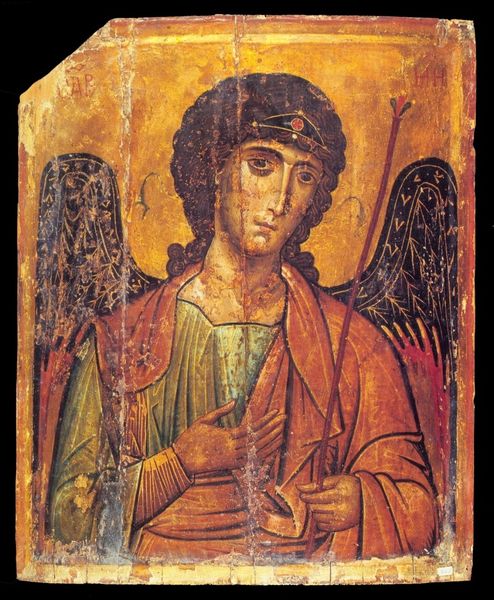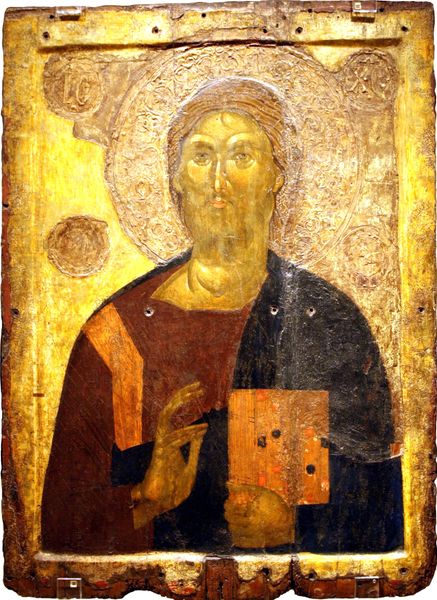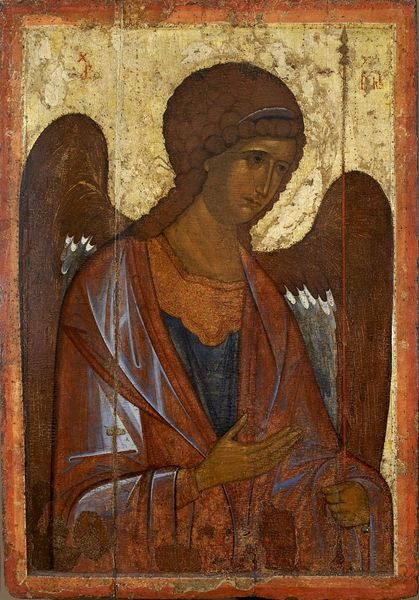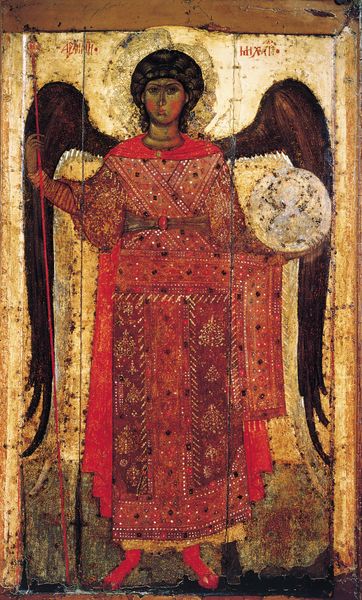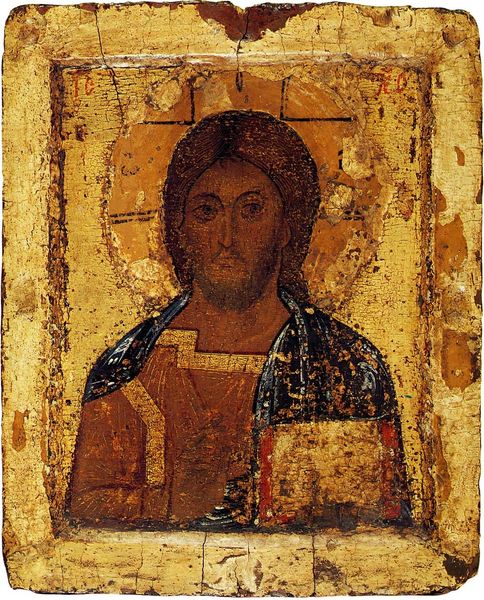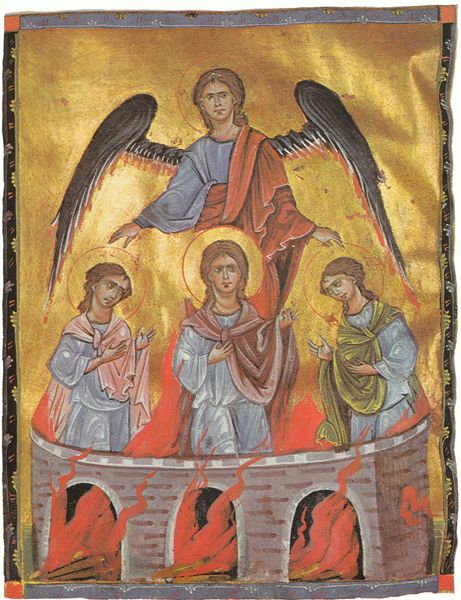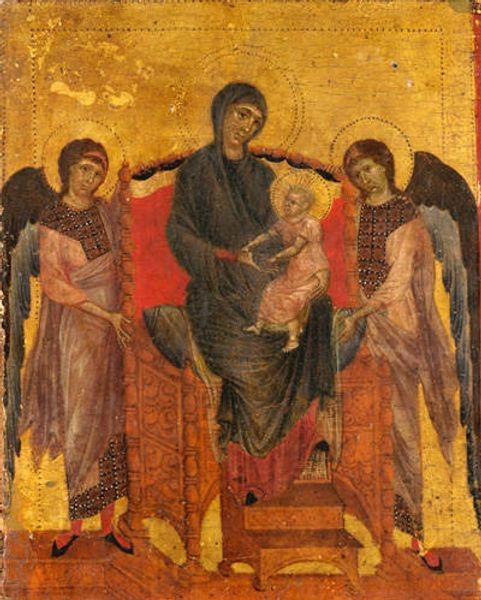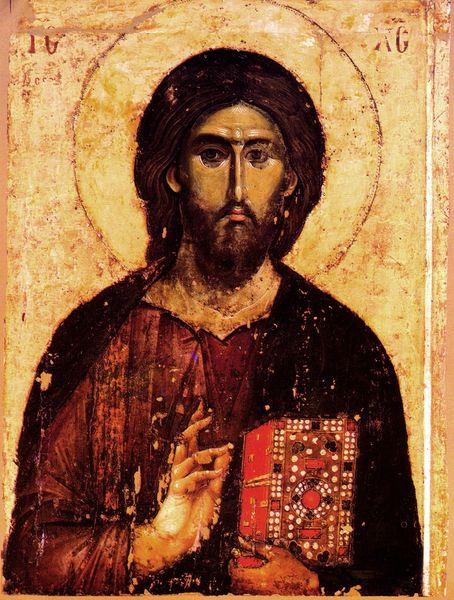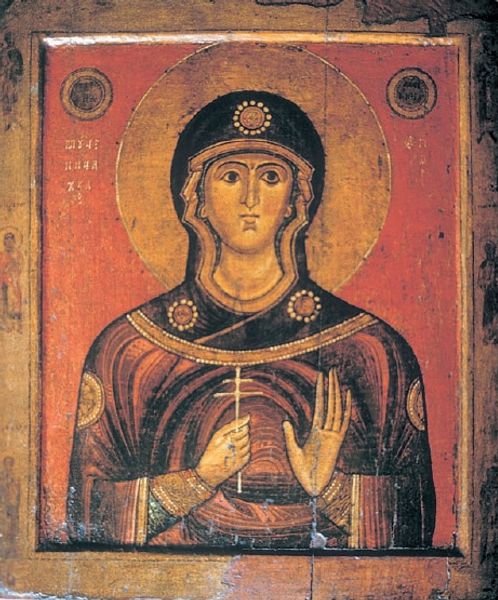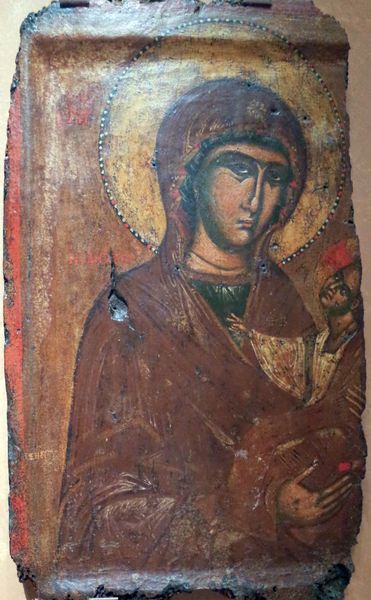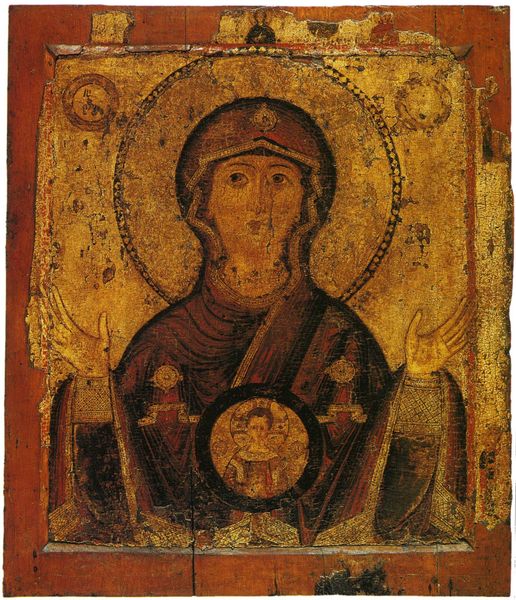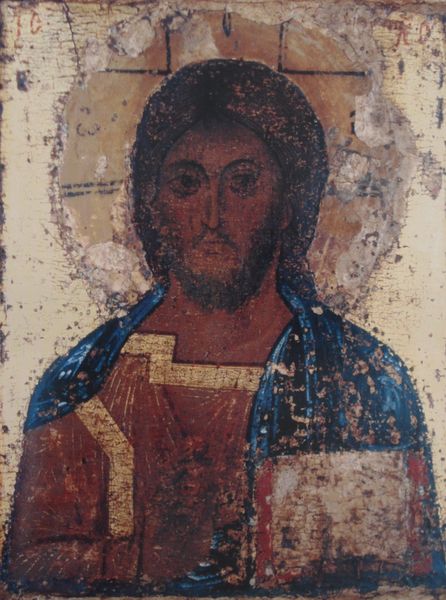
panel, tempera, painting
#
portrait
#
byzantine-art
#
medieval
#
panel
#
tempera
#
painting
#
figuration
#
oil painting
#
naive art
#
history-painting
#
portrait art
Copyright: Orthodox Icons,Fair Use
Curator: Here, we have a tempera on panel painting from around 1350, titled Saint Michael. It currently resides in the Byzantine and Christian Museum in Athens. There's an imposing quality to it, isn't there? Editor: Absolutely. The sheer age and condition of the panel convey an austere feeling. But beyond the evident decay, what strikes me first is Michael's ambiguous gaze – it's not aggressive, but knowing. There's power here, certainly, but also a melancholy, perhaps? Curator: The artist has employed very specific iconographic elements to depict this celestial being. He holds a scepter and an orb emblazoned with the letters Chi, Rho, Alpha, and Omega—symbols laden with meaning that viewers across centuries could decode instantly. The Chi Rho of course references Christ, while Alpha and Omega indicate God's omnipresence from beginning to end. It anchors the image in a very potent, very enduring theology. Editor: Precisely. And while rooted in theology, the symbolism resonates on various planes. The artist seems aware of their role in communicating both spiritual and earthly power, particularly with the depiction of Michael. Is he a divine messenger? A symbol of imperial authority? He feels caught between the celestial and political realms. I see the weight of both reflected in those eyes. Curator: That’s very astute. Medieval Byzantine art rarely separates spiritual and political messaging, and depictions of Archangels certainly embodied a sort of "heavenly bureaucracy". But let’s also note the choices of color. Predominantly reddish browns, the shade of Earth, are contrasted with the more solemn blacks. I interpret this in part to emphasize his role as an intercessor, an earthy mediator. Editor: An intercessor burdened by the temporal, I’d wager. Note too the cracks in the paint, they accentuate the historicity, adding texture to the overall reading. This isn't simply a pretty painting, it is history – with its various imperfections, scars, and a multitude of untold narratives layering up. Curator: Yes, and when seen in its full historical and iconographic context, “Saint Michael” transcends its function as mere decoration or illustration and really presents a focal point for both devotional practice and also deep cultural understanding. Editor: An imperfect object, radiating strength—that's precisely what resonates now. This brief glimpse into Byzantine ideology reinforces art’s ability to compress complex themes within visual vocabulary accessible across time and cultures.
Comments
No comments
Be the first to comment and join the conversation on the ultimate creative platform.
